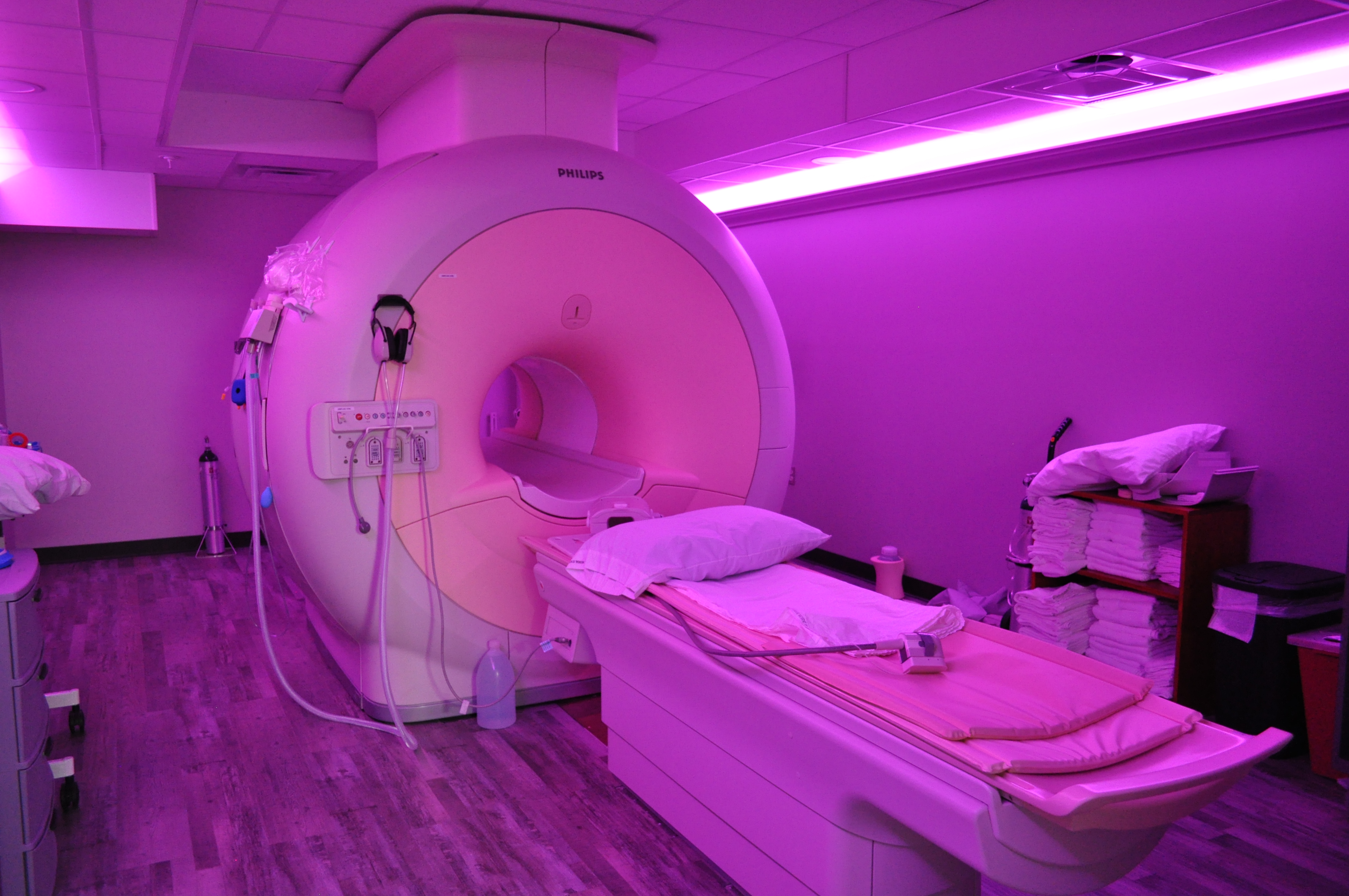Magnetic Resonance Imaging (MRI)
Magnetic Resonance Imaging (MRI) is a non-invasive imaging technology that produces three dimensional detailed anatomical images. It is often used for disease detection, diagnosis, and treatment monitoring.
 MRIs use powerful magnets that produce a strong magnetic field that allows
physicians the ability to tell the difference between various types of
tissues based on the magnetic properties.
MRIs use powerful magnets that produce a strong magnetic field that allows
physicians the ability to tell the difference between various types of
tissues based on the magnetic properties.
MRIs are performed inside a large tube that holds the magnet. It is important to remain very still during the imaging process in order to not blur the image. MRIs are best suited for the soft tissues of the body.
MRI of the brain and spinal cord
MRI is the most frequently used imaging test of the brain and spinal cord. It's often performed to help diagnose:
- Aneurysms of cerebral vessels
- Disorders of the eye and inner ear
- Multiple sclerosis
- Spinal cord disorders
- Stroke
- Tumors
- Brain injury from trauma
MRI of other internal organs
MRI can check for tumors or other abnormalities of many organs in the body, including the following:
- Liver and bile ducts
- Kidneys
- Spleen
- Pancreas
- Uterus
- Ovaries
- Prostate
MRI of bones and joints
MRI can help evaluate:
- Joint abnormalities caused by traumatic or repetitive injuries, such as torn cartilage or ligaments
- Disk abnormalities in the spine
- Bone infections
- Tumors of the bones and soft tissues
